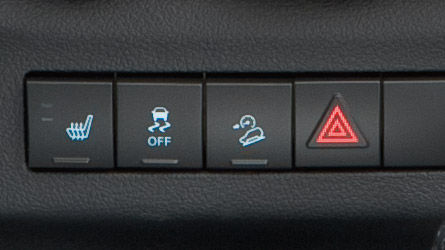Important: Business holidays from March 27th to April 2nd. We will still process your orders, but replies may take longer than normal. Happy Easter! :)
Happy Australia Day weekend. SAVE 10% by using code STRAYA24 in the checkout. Ends tomorrow!
Effortless Sand Driving: Follow These 5 Tips to Keep Your Jeep Moving Smoothly
Your checklist on driving your Jeep on sand
Driving on sand can be a fun and exciting experience, especially when you have a Jeep Wrangler. These tough and capable vehicles are built to handle off-road terrain, and they are well-suited for driving on sand. However, it's important to follow some key tips and techniques to ensure a safe and enjoyable experience.
Preparation
Before you set out on your sand-driving adventure, make sure you are prepared. Here are some things to consider:
- Check your vehicle: Make sure your Jeep Wrangler is in good working order before you hit the sand. Check your tires, brakes, and other key systems to ensure they are functioning properly. You may also want to consider adding some additional equipment, such as skid plates or rock sliders, to protect your vehicle from damage.
- Pack supplies: Bring plenty of water, food, and other supplies with you. You never know what could happen when driving on sand, and it's important to be prepared in case of an emergency.
- Follow the rules: Be sure to follow any local rules and regulations when driving on sand. This may include obtaining special permits or following designated trails.
5 Tips for Driving on Sand
Now that you're prepared for your trip, it's time to hit the sand. Here are some tips for driving on sand with your Jeep Wrangler:
- Use your 4-low gear: When driving on sand, it's important to use your 4-low gear to help maintain traction. This will allow you to crawl over obstacles and maintain control of your vehicle.
- Bring the Jeep to a complete stop and apply the parking brake.
- Shift the transmission into neutral.
- Locate the transfer case lever, which is usually located on the floor near the center console.
- Shift the transfer case lever into the 4-low position. This will typically require moving the lever forward and down, or backward and up, depending on the specific model of Jeep Wrangler.
- Shift your automatic transmission back into "Drive" or your manual transmission into the 1st gear.
- Slowly release the parking brake and begin driving in 4-low gear.
- Lower your tire pressure: To improve traction on sand, it's necessary to increase the size of the contact patch between the tires and the ground. Lowering the tire pressure allows the tires to deform and create a larger contact patch, which helps the tire grip the sand more effectively and allows the vehicle to move more easily over the soft terrain. A tire pressure of around 20-30 PSI is generally recommended for driving on sand.
- Keep a steady pace: Avoid jerky movements and sudden acceleration or braking. Instead, try to keep a steady pace and make smooth, gradual turns.
- Decide whether to use traction control: Traction control can help improve traction and stability when driving on sand, but it can also limit the vehicle's ability to adapt to changing conditions. If the sand is relatively firm and smooth (usually the lowest part of the beach on low tide), traction control may be helpful in maintaining stability and preventing the wheels from spinning. If the sand is soft and loose, however, traction control may actually hinder the vehicle's ability to move through the sand.
 It's a good idea to try driving with the traction control off first and see how the vehicle performs. If you're having trouble maintaining traction, feeling your wheels are stopping intermittently and higher engine revs won’t make your Jeep go faster, chances are, that your traction control is braking your tires and preventing to send more power to those wheels. Now you can try turning the traction control back on to see if it helps. To turn off traction control, stop your Jeep then press and hold the traction control button (the one with the little car on two squiggly lines and the word “off” for about 7 seconds until you hear a “ding”. This fully turns off your traction control system.
It's a good idea to try driving with the traction control off first and see how the vehicle performs. If you're having trouble maintaining traction, feeling your wheels are stopping intermittently and higher engine revs won’t make your Jeep go faster, chances are, that your traction control is braking your tires and preventing to send more power to those wheels. Now you can try turning the traction control back on to see if it helps. To turn off traction control, stop your Jeep then press and hold the traction control button (the one with the little car on two squiggly lines and the word “off” for about 7 seconds until you hear a “ding”. This fully turns off your traction control system.
- Take breaks: Driving on sand can be physically demanding, so be sure to take breaks and rest when needed while also keeping an eye on engine and transmission oil temperatures.
With these tips in mind, you'll be well-prepared to tackle the sand in your Jeep Wrangler. Just remember to stay safe, follow the rules, and have fun!